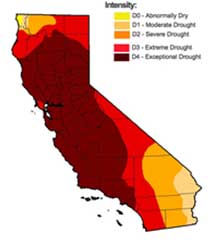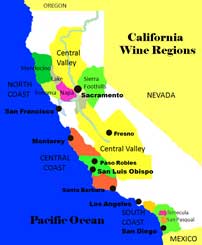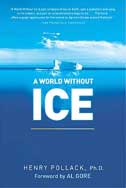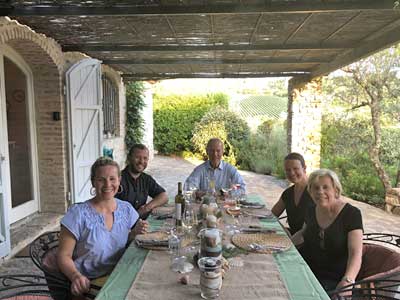Class News
Tony Lavely ’64 on vineyards and climate change
Climate change won’t boost wine ratings
by Tony Lavely ’64
September 23, 2020
Before I talk about the climate threat to the great wine vineyards of the world, I should apologize for making my case just about wine.  After all, people’s lives don’t depend on wine as they do on nutritious food. In July 2020, The New York Times devoted their entire Sunday Magazine to “The Great Climate Migration.” It documented the millions of people who are leaving their homes in search of a habitat able to sustain agriculture. But wine is what I love, so that is why I am writing about it. After all, wine was part of the blessing on Abraham, and 2000 years later, Jesus used it in the Passover as the blood of the New Covenant. And long before them, Dionysus was revered as one of the greatest of the Greek gods, the god of the grape harvest, winemaking and wine, and of fertility.
After all, people’s lives don’t depend on wine as they do on nutritious food. In July 2020, The New York Times devoted their entire Sunday Magazine to “The Great Climate Migration.” It documented the millions of people who are leaving their homes in search of a habitat able to sustain agriculture. But wine is what I love, so that is why I am writing about it. After all, wine was part of the blessing on Abraham, and 2000 years later, Jesus used it in the Passover as the blood of the New Covenant. And long before them, Dionysus was revered as one of the greatest of the Greek gods, the god of the grape harvest, winemaking and wine, and of fertility.

Why does this matter to me? As a wine sommelier, certified by the Court of Master Sommeliers, I have spent a good part of my life studying wine, visiting the great vineyards of the world, and of course enjoying wine with family and friends. I have met and learned from some legendary winemakers like Robert Mondavi, Augustin Huneeus (Quintessa and Faust), and Joe Wagner (Caymus and Bel Glos).

Robert Mondavi

Augustin Huneeus

Joe Wagner
The most important lesson about wine is the understanding of “terroir,” the “complete natural environment in which a particular wine is produced, including factors such as the soil, topography, and climate.” Climate, or more accurately, “climate change,” is my focus in this article. For it is climate change — temperatures, drought, and wildfire, to mention some of the factors — that is threatening the great wine-growing regions of the world. In short, I would not buy a wine vineyard today, because they may not survive this century if climate change is not mitigated in major ways. On the other hand, I might buy some fields in western Canada, where the great vineyards of tomorrow may emerge.

Let’s dig a little deeper into terroir. Terroir is a French term used to describe the environmental factors that affect a crop's phenotype, including unique environment contexts, farming practices, and a crop's specific growth habitat. Here is a diagram that explains it well and shows that climate is one of four critical factors in the terroir of a wine. Most people know that all wines are not created equal, and all wines do not taste the same. That is why you can buy a bottle of wine for $10 and another bottle for $1000. Tastes are different, too. Wine grapes from warmer climates generate higher sugar levels, whereas wine grapes in cooler climates have lower sugar levels and retain more acidity. The one thing they all have in common is climate. And climate is what is changing, much faster than most people realize. Climate change manifests itself as changes in temperature (both hotter and cooler; averages are deceiving in this regard) and the lack of water (i.e., drought and wildfires, especially the smoke they generate).


Where are these critical climate factors becoming most apparent? How about Northern California? Look at a map of Northern California that identifies the greatest wine-growing regions. Then look at a map of the same area that shows droughts and wildfires. It is almost a perfect overlay. Maps of Oregon and Washington State show the same thing, as do the wine regions of Europe, especially France and Italy. Technology can address the shortage of water, but it is an expensive proposition to provide piped-in water to large areas. But technology cannot protect vineyards from fire and smoke.  Fires can be somewhat contained, but smoke cannot. Check any wine critic, and you will not find him or her extolling “the aroma of smoke” in a wine. The grapes absorb the smoke, which essentially ruins the taste. People like smoky barbeque, not smoky wine.
Fires can be somewhat contained, but smoke cannot. Check any wine critic, and you will not find him or her extolling “the aroma of smoke” in a wine. The grapes absorb the smoke, which essentially ruins the taste. People like smoky barbeque, not smoky wine.
This is why we must address the causes of climate change, not just the results of climate change. As Mark Lynas explains in his seminal and foreboding book,  Our Final Warning: Six Degrees of Climate Emergency, “It is not yet too late to avoid the worst, but we do not have much time. Scientists now know, with extraordinary precision, which carbon emissions budgets will lead to which temperature outcomes. There can be no looking back and saying ‘I didn’t know.’”
Our Final Warning: Six Degrees of Climate Emergency, “It is not yet too late to avoid the worst, but we do not have much time. Scientists now know, with extraordinary precision, which carbon emissions budgets will lead to which temperature outcomes. There can be no looking back and saying ‘I didn’t know.’”
Another prophet in forecasting the disastrous effects of climate change is Henry Pollack in his vivid book, World Without Ice. The ice that used to be available in the U.S. as a source of stored water for agriculture is disappearing rapidly. Writing about the availability of water for agriculture (think wine vineyards), Pollack says: “Domestic use of groundwater represents the lesser call on underground water. Twice as much is pumped for agricultural irrigation in the areas of the U.S. where precipitation is inadequate.  The regions most dependent on groundwater for agriculture are in California.”
The regions most dependent on groundwater for agriculture are in California.”
The owners of the highest priced vineyards in California and other famous wine-growing regions are understandably reluctant to say too much about these threats, but you can be certain that they are worried about them. They may even be putting their vineyards up for sale before the word gets out. But the word is getting out. Writing in Wine Spectator, Augustus Weed said: “As the name implies, smoke taint can impart smoky flavors and aromas to a wine that render it unpleasant and unmarketable. Wines impacted by smoke taint are not harmful to drink, but they're not pleasant. At high levels, the taste has been variously described as campfire, ashtray, and char.” Weed continued, “California’s wine regions have faced wildfires [before], but since 2015 that has increased to nearly every year as the climate warms and the state endures repeated drought conditions.”

Another writer in Wine Spectator, Lexi Williams, was even more descriptive: “As its name may tell you, smoke taint happens when grapes are exposed to smoke, but it's more than just residue sitting on the grapes that cause these unpleasant flavors — and you can't just rinse it off. When wood burns, it releases aroma compounds called volatile phenols. In the vineyard, these compounds can permeate the grape skins and rapidly bond with the sugars inside to form molecules called glycosides. The best descriptor I've heard for the flavor profile of a smoke-tainted wine was that if you're particularly fond of licking wet ash trays, you'll like this wine." Are you getting thirsty yet?

We must have reverence for the great agricultural areas of the world and protect them. The only way to protect them is by rapidly mitigating climate change, especially by reducing the emission of carbon dioxide that causes global warming. Climate change — I take it personally. I don’t want to deprive my children and grandchildren of a healthy planet or of the enjoyment of wine. Remember the words of a wise man who understood both people and nature.


